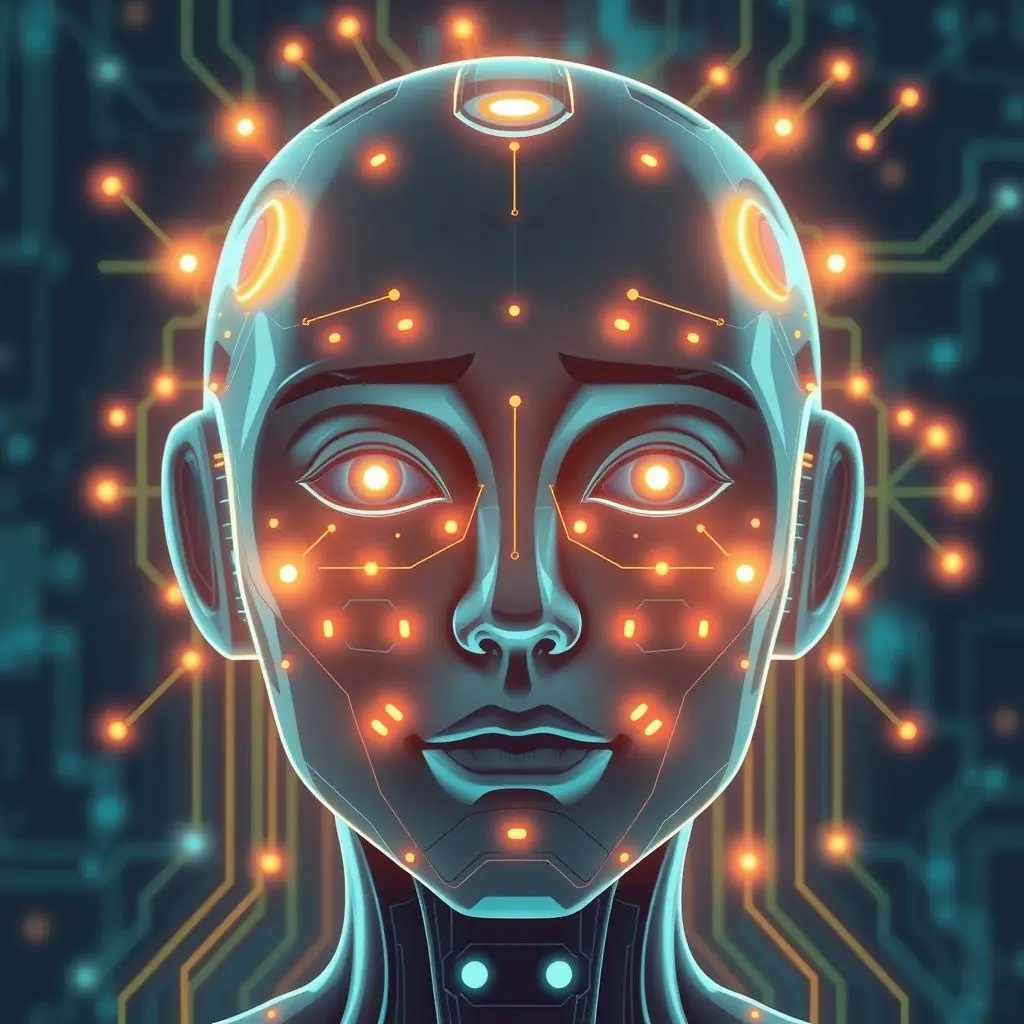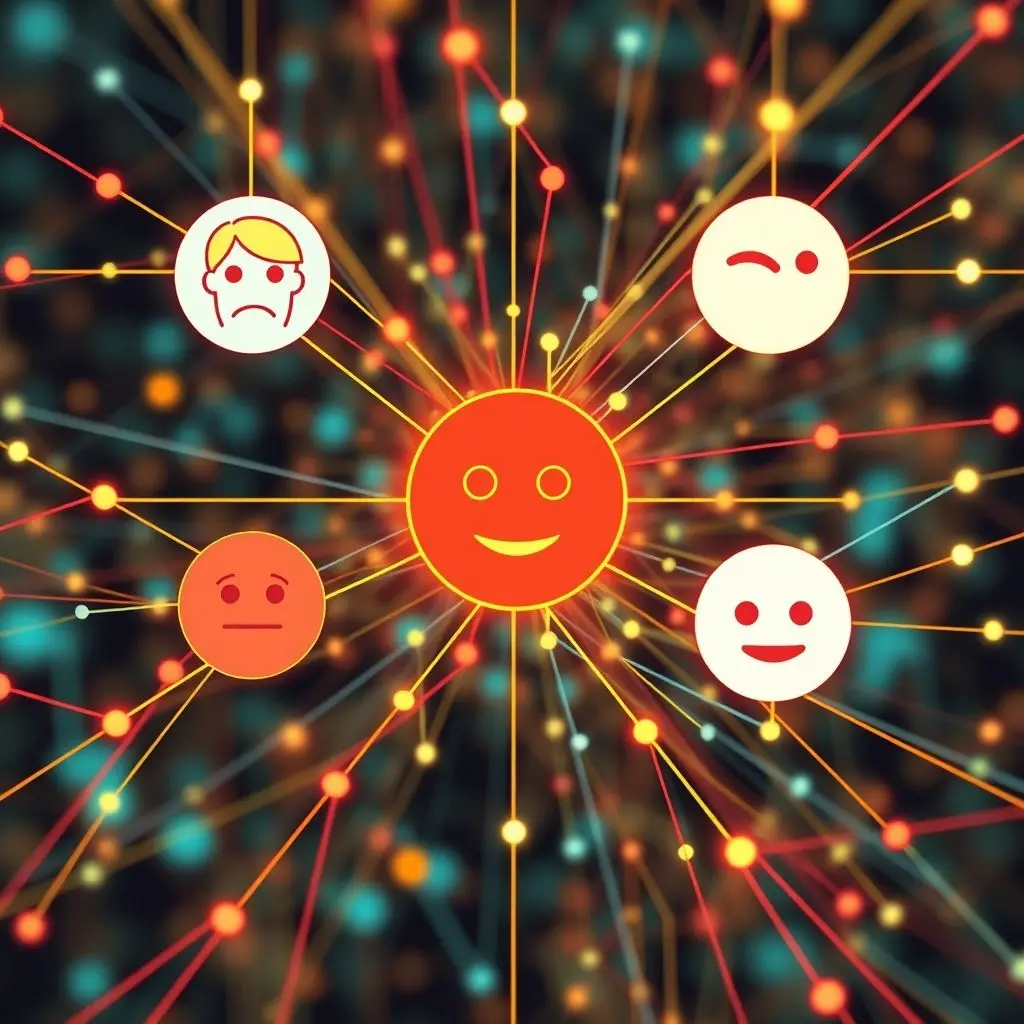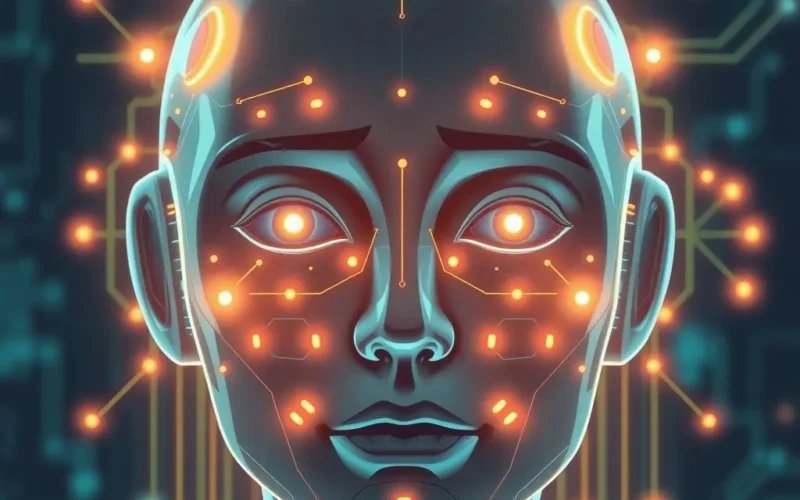Ever found yourself wondering if the machines around you could possibly grasp the nuances of human emotion? It sounds like something straight out of a science fiction novel, but we’re already navigating the intriguing territory of what’s widely known as Emotional AI, or more technically, Affective Computing.
Let’s get one thing clear from the start: the current goal isn’t to imbue machines with consciousness or the ability to *feel* sadness, joy, or frustration the way we do. Instead, the focus is on training these sophisticated systems to effectively sense, interpret, and respond to human emotional signals.
Think about how much information we convey beyond just words — through the tone of our voice, the subtle shifts in our facial expressions, or even the patterns in our writing. Emotional AI is designed to pick up on these complex cues, analyze them using powerful algorithms, and then simulate an appropriate, often empathetic, response.
From systems that curate personalized music playlists based on your mood to customer service bots attempting to de-escalate frustration, these technologies are working behind the scenes, powered by vast amounts of data and cutting-edge machine learning techniques.
Table of Contents
What Exactly is Affective Computing?
At its heart, Affective Computing is an interdisciplinary field spanning computer science, psychology, and cognitive science. Pioneered by Dr. Rosalind Picard at MIT in the mid-1990s, the aim was to give computers the ability to recognize, understand, and even express human affect (emotions and moods).
The core principle is pattern recognition. Humans exhibit discernible patterns — in vocal pitch, facial muscle movements, word choice — that correlate with emotional states. Affective Computing systems are trained on massive datasets of labeled emotional expressions to identify these patterns.

It’s a data-driven simulation of empathy and understanding, designed to make interactions with machines feel more natural, intuitive, and helpful. They analyze complex inputs to tailor their output, aiming for interactions that feel less robotic and more… well, human-aware.
How Do Robots “Sense” Emotions?
Machines don’t have eyes or ears in the biological sense, nor do they experience physiological changes linked to emotion. They rely on sensors and algorithms to process external data streams. Here are some key methods:
- Facial Expression Recognition (FER): Cameras capture images or video of a face. Algorithms analyze facial landmarks and the movements of muscles (like the raising of an eyebrow or the corner of a mouth) to match them against known patterns associated with basic emotions (joy, sadness, anger, surprise, fear, disgust). Advanced systems can detect more subtle or blended emotions.
- Speech Emotion Recognition (SER): Microphones capture voice data. Software analyzes vocal characteristics such as pitch, tone, tempo, rhythm, and amplitude. These acoustic features are compared to patterns in training data to infer the emotional state of the speaker. Think about how different your voice sounds when you’re excited versus when you’re tired or annoyed.
- Natural Language Processing (NLP) and Sentiment Analysis: This involves analyzing written or spoken text. NLP helps the AI understand the structure and meaning of language, while sentiment analysis specifically focuses on determining the emotional tone (positive, negative, neutral) and even specific emotions expressed within the text. Sarcasm and irony remain significant challenges!
- Physiological Signal Processing (Less Common in Everyday AI): In research or specialized applications (like health monitoring), AI can analyze data from sensors measuring heart rate, galvanic skin response (sweat), body temperature, and posture. These physiological cues can provide deeper insights into emotional arousal, though they are harder to interpret unambiguously on their own.
By combining data from multiple sources — say, analyzing both the tone of voice and the facial expression simultaneously — Affective Computing systems can achieve higher accuracy in interpreting human emotional states.
Applications: Where is Emotional AI Showing Up?
The potential applications of Affective Computing are vast and continue to expand. Here are a few areas where it’s making an impact:
- Customer Service and Experience: Chatbots and virtual assistants can detect customer frustration or confusion and potentially route them to a human agent or adjust their communication style. Analyzing customer emotions during calls can help companies identify areas for improvement.
- Healthcare and Well-being: Monitoring patient sentiment and voice patterns could potentially assist in detecting early signs of depression or anxiety (Disclaimer: These are still largely experimental and not replacements for professional medical diagnosis or treatment.). Companion robots could adjust their interaction based on a user’s mood.
- Education: AI tutors could potentially gauge student frustration or boredom and adapt their teaching methods or pace. Analyzing student engagement during online lessons via facial expressions could provide valuable feedback to educators.
- Marketing and Advertising: Measuring audience emotional responses to advertisements or product displays can help refine campaigns and design. Personalized recommendations could factor in detected mood.
- Automotive: In-car AI systems could monitor driver drowsiness or distraction through facial analysis and issue warnings. They might even adjust cabin lighting or music based on the driver’s mood to promote alertness or relaxation.
- Entertainment: Video games or interactive stories could adapt their narrative or challenges based on the player’s detected emotions. Personalized content recommendations might go beyond just viewing history.
These are just a few examples, illustrating how machines are being designed to interact with us on a more sophisticated, emotionally-aware level.

Curious to see this fascinating concept explained quickly? We put together a brief look at Affective Computing. Take a moment to watch:
As the short video touches upon, this brings us to a critical point: the distinction between faking and feeling.
Feeling vs. Faking: The Simulation Question
It’s vital to reiterate: current Emotional AI systems do not *feel* emotions. They don’t experience the subjective, internal state associated with joy or pain. What they do is simulate empathy and emotional understanding based on observed patterns and programmed responses.
They are incredibly sophisticated mimicry machines. By analyzing enough examples of how humans look, sound, and write when they are happy, sad, or angry, the AI learns to associate those patterns with the labels “happy,” “sad,” or “angry.” It can then generate a response — text, a change in voice tone, an on-screen avatar’s expression — that a human would perceive as appropriate for that emotional state.
This simulation is powerful because it makes interactions feel more natural. A customer service bot that recognizes your frustration and responds with a calming phrase and an offer to connect you with a human feels more helpful than one that blindly follows a script. But this interaction is based on recognizing the *markers* of frustration, not experiencing the feeling itself.

The question then becomes: for practical purposes, is simulating empathy effectively *enough*? For many applications, perhaps. We often just need the system to understand our state to help us more efficiently, not to genuinely commiserate. However, this raises profound questions about the nature of consciousness, empathy, and what it means to truly understand another being.
Challenges and Ethical Considerations
The rise of Emotional AI isn’t without its hurdles and ethical minefields.
- Privacy: Collecting and analyzing continuous streams of data — facial expressions, voice, physiological signals — raises significant privacy concerns. Who owns this emotional data? How is it stored and protected? Could it be used without explicit consent?
- Manipulation: If AI can detect our emotional state, it could potentially be used to manipulate us — in advertising, political campaigns, or even personal interactions with robots or virtual assistants designed to persuade us. Knowing someone is feeling vulnerable could be exploited.
- Bias: AI systems are only as unbiased as the data they are trained on. If training data disproportionately represents certain demographics or emotional expressions, the AI might be less accurate at interpreting emotions from underrepresented groups, potentially leading to unfair or discriminatory outcomes.
- Accuracy and Misinterpretation: Human emotions are complex and context-dependent. A system might misinterpret sarcasm as anger or cultural differences in expression as a negative emotion. Inaccurate emotional readings could lead to inappropriate responses or decisions.
- Security: Emotional data could be highly sensitive. Ensuring these systems are secure from hacking or unauthorized access is paramount.
- The ‘Authenticity’ Question: As AI becomes better at simulating empathy, how does this change human-to-machine and even human-to-human interactions? Could we become more comfortable interacting with machines that *act* empathetic than with humans who might not?

Addressing these challenges requires careful consideration from developers, policymakers, and society as a whole as Emotional AI becomes more integrated into our lives.
The Future Landscape
Affective Computing is still a relatively young field with immense potential. We can anticipate systems becoming more sophisticated, capable of understanding more nuanced emotional states and combinations, and adapting their responses with greater subtlety.
Integration into everyday devices, from smartphones to smart homes, is likely to increase. AI companions, educational tools, and healthcare aids could become more personalized and responsive due to their ability to ‘read the room’ emotionally.
However, the journey also involves ongoing research into the fundamental nature of emotion, the development of more robust and unbiased datasets, and crucially, the establishment of ethical guidelines and regulations to ensure this technology is used for the betterment of humanity, not its exploitation.
Frequently Asked Questions About Emotional AI
Q: Can Emotional AI systems truly *feel* emotions?
A: No, not in the human sense of subjective experience or consciousness. They are designed to recognize and interpret the *expression* of human emotions based on data patterns and simulate appropriate responses.
Q: How accurate is Emotional AI?
A: Accuracy varies greatly depending on the system, the type of emotion, the data source (facial, voice, text), the quality of the training data, and the context. While accuracy is improving, human emotions are complex and context-dependent, making misinterpretations possible.
Q: Is Emotional AI already being used?
A: Yes, it is being used in various applications, including customer service analysis, market research, educational tools, and assistive technologies, often behind the scenes.
Q: What are the biggest concerns with Emotional AI?
A: Major concerns include privacy violations due to the collection of sensitive emotional data, the potential for manipulation based on detected emotions, algorithmic bias leading to unfair interpretations, and the security of the collected data.
Q: How is Affective Computing different from Sentiment Analysis?
A: Sentiment analysis is a subfield, typically focused on determining the overall positive, negative, or neutral tone of text. Affective Computing is broader, aiming to understand a wider range of specific emotions (like anger, joy, fear) from various modalities (text, voice, face, physiology).
Embracing the Nuance
So, while robots aren’t yet having existential crises or shedding genuine tears, their capacity to understand and react to our emotional world is rapidly evolving. This simulation of empathy, born from complex algorithms and vast datasets, is poised to redefine how we interact with technology. It’s a powerful tool with incredible potential, yet one that demands careful consideration of the ethical implications as we navigate a future where machines don’t just process data, but also interpret — and respond to — the very human signals of our feelings.





